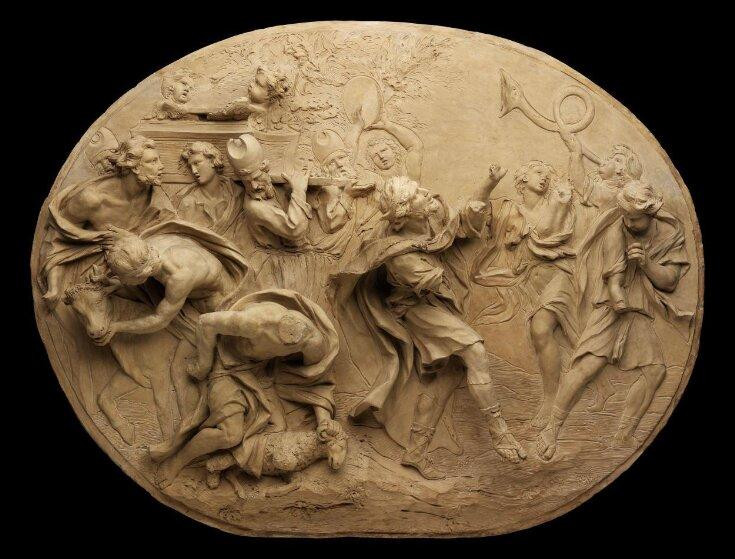The saying “Dancing Without Leaving Room For Jesus” might sound humorous at first. It evokes images of couples cheek-to-cheek on the dance floor, perhaps a little too close for comfort. But beneath the surface, this folksy expression touches on deeper themes within Christian culture, specifically around physical boundaries, purity, and the ever-present desire to honor religious values in everyday life. Where did this peculiar phrase originate, and what does it really mean in a modern context?
What Does “Dancing Without Leaving Room for Jesus” Really Mean?
At its most literal, “dancing without leaving room for Jesus” describes a couple dancing so closely that there’s no space between them – not even enough room for a third person, symbolically Jesus Christ, to fit. This saying emerged from a cultural expectation within some Christian circles that men and women should maintain a certain physical distance, particularly when dancing. The idea was to keep enough space, both literally and figuratively, to prevent temptation and maintain purity.
The imagined presence of Jesus acts as a moral compass, a reminder to maintain decorum and avoid overly intimate physical contact outside of marriage. It’s a visual and somewhat humorous way to encourage restraint and uphold values of sexual purity that are deeply embedded in certain Christian teachings.
This principle extends beyond the dance floor. Variations like “leave room for Jesus,” “save room for Jesus,” or “make room for Jesus” apply to various social situations. Whether it’s sitting together on a couch, sharing a booth at a restaurant, or even spending time alone, the underlying message remains: maintain boundaries that honor God and prevent situations that could lead to temptation or compromise one’s commitment to purity. By “leaving room for Jesus,” individuals aim to create a buffer against potentially inappropriate intimacy, guided by their faith and the desire to live according to their religious principles.
 Couple dancing closely, symbolizing "dancing without leaving room for Jesus"
Couple dancing closely, symbolizing "dancing without leaving room for Jesus"
The Historical Roots of “Leave Room for Jesus”
While not directly from scripture, the phrase “danced without leaving room for Jesus” is a product of Christian purity culture, which emphasizes sexual abstinence outside of heterosexual marriage and maintaining purity in thought and action. The rise of this saying is likely linked to periods of significant social change, particularly the sexual revolutions of the 20th century.
As societal norms around sexuality became more liberal in the 1920s, 1960s, and 1990s, conservative Christian communities sought to reinforce traditional values. Dance halls and evolving attitudes towards premarital relationships were often viewed with concern, perceived as environments that could lead to moral compromise.
The phrase “leave room for Jesus” probably emerged as a catchy and memorable way to communicate these boundaries, particularly to younger generations. It’s part of a broader movement that included purity pledges, purity rings, and purity balls, all designed to promote and reinforce traditional Christian teachings on sexuality and relationships, especially during the heightened purity culture movement of the 1990s. It was a cultural tool to navigate changing social landscapes while upholding religious convictions.
From Purity Culture to Pop Culture: Modern Interpretations
Today, while the phrase “dancing without leaving room for Jesus” or “save room for Jesus” still circulates, its tone has largely shifted. It’s less often used as a serious admonishment and more frequently employed satirically or humorously. The phrase has transcended its original context and entered popular culture as a lighthearted reference to overly close dancing or the concept of maintaining boundaries in relationships.
Examples of this evolution are readily found in modern media. The phrase has popped up in unexpected places like an episode of the popular ABC sitcom Black-ish, demonstrating its reach beyond religious circles. It’s also become a popular online meme, often used to playfully comment on pictures of couples standing or dancing very close together. Even the movie Footloose, while not using the exact phrase, captures the essence of the underlying cultural tension by depicting a conservative community wary of dance’s perceived corrupting influence.
Interestingly, the saying found a new, albeit temporary, application during the COVID-19 pandemic. Churches and other organizations playfully used “leave room for Jesus” on posters and social media to encourage social distancing, cleverly adapting the familiar phrase to promote public health measures.
Furthermore, the concept of “making space for Jesus” has evolved metaphorically. Beyond physical proximity, it now often encourages individuals to intentionally create room for Jesus’s influence in their daily lives, amidst busy schedules and distractions. This contemporary interpretation emphasizes spiritual space and mindfulness in one’s relationship with faith.
Dancing in the Bible: A Mixed Message?
The Bible presents a nuanced view of dance. It’s not uniformly condemned, nor is it always praised. Instead, the Bible showcases dancing in various contexts, both positive and negative, reflecting its multifaceted role in human expression and worship.
Biblical Dances of Praise and Celebration
Numerous instances in the Bible depict dancing as an act of worship, celebration, and praise. Miriam, Moses’ sister, led women in dance and song to celebrate God’s deliverance after crossing the Red Sea (Exodus 15:20). Women danced and sang joyfully upon David’s triumphant return after defeating Goliath (1 Samuel 18:6-7).
King David himself famously danced before the Lord with unrestrained joy when the Ark of the Covenant was returned to Jerusalem (2 Samuel 6:14-17). His passionate display, though criticized by his wife Michal for being undignified, was an expression of deep devotion and celebration of God’s presence. The prophets Jeremiah and the Psalms also mention dance as a form of rejoicing and praising God (Jeremiah 31:4, 13; Psalm 149:3, 150:4). Even Ecclesiastes acknowledges “a time to dance” within the seasons of life (Ecclesiastes 3:4).
 King David dancing before the Ark of the Covenant, illustrating positive biblical dance
King David dancing before the Ark of the Covenant, illustrating positive biblical dance
Sinful Dancing in the Bible
Conversely, the Bible also portrays dancing in negative light, particularly when associated with idolatry or immoral behavior. The Israelites’ worship of the golden calf involved dancing, which incited Moses’s anger and symbolized their deviation from God’s commandments (Exodus 32:19). Similarly, the prophets of Baal danced around their altar in a futile attempt to summon their deity (1 Kings 18:26).
Perhaps one of the most somber examples is Herod’s stepdaughter Salome, whose seductive dance for King Herod led to John the Baptist’s beheading (Mark 6:22-25). These instances highlight that the context and intention behind dancing are crucial. Dance itself is not inherently sinful, but it can become so when misdirected towards false gods or used for manipulative or immoral purposes.
 People engaged in idolatrous dance around the Golden Calf, representing negative biblical dance
People engaged in idolatrous dance around the Golden Calf, representing negative biblical dance
Did Jesus Cut a Rug? Jesus and the Dance Question
The Bible doesn’t explicitly state whether Jesus danced. However, considering his Jewish upbringing and the cultural context of his time, it’s plausible, even likely, that he participated in dance. Dance was an integral part of Jewish celebrations and religious expression. Jesus attended a wedding in Cana (John 2), and Jewish weddings were joyous, multi-day events that undoubtedly included dancing.
Furthermore, Jesus’s parables and teachings sometimes referenced dancing. In Luke 7:31-32, he uses the metaphor of children playing wedding and funeral games, lamenting, “We piped to you, and you didn’t dance; we wailed, and you didn’t weep.” This suggests that dancing was a normal and expected response to joyful occasions in his culture.
While we can’t definitively say “Jesus danced,” the cultural and biblical context points towards it being a natural part of his life experience. This perspective challenges a rigid interpretation of “dancing without leaving room for Jesus” as an absolute prohibition and encourages a more nuanced understanding.
 A person dancing with joyful expression, representing dancing for Christ
A person dancing with joyful expression, representing dancing for Christ
Dancing for Christ: Honoring God in Movement
Ultimately, the question isn’t whether dancing is inherently right or wrong, but how we approach it. As Paul encourages in 1 Corinthians 10:31, “So whether you eat or drink or whatever you do, do it all for the glory of God.” This principle applies to dancing as well.
“Leaving room for Jesus” shouldn’t be solely interpreted as maintaining a literal physical gap. Instead, it’s about cultivating an attitude of reverence and intention in all our actions, including dance. For Christians, dancing can be an expression of joy, celebration, and even worship, provided it’s done in a way that honors God and aligns with their values. It’s about submitting to the Holy Spirit’s guidance and asking, “Does this action, this dance, glorify God?” If the answer is yes, then you can confidently dance for Christ, with or without leaving literal space, but always with spiritual intention.

